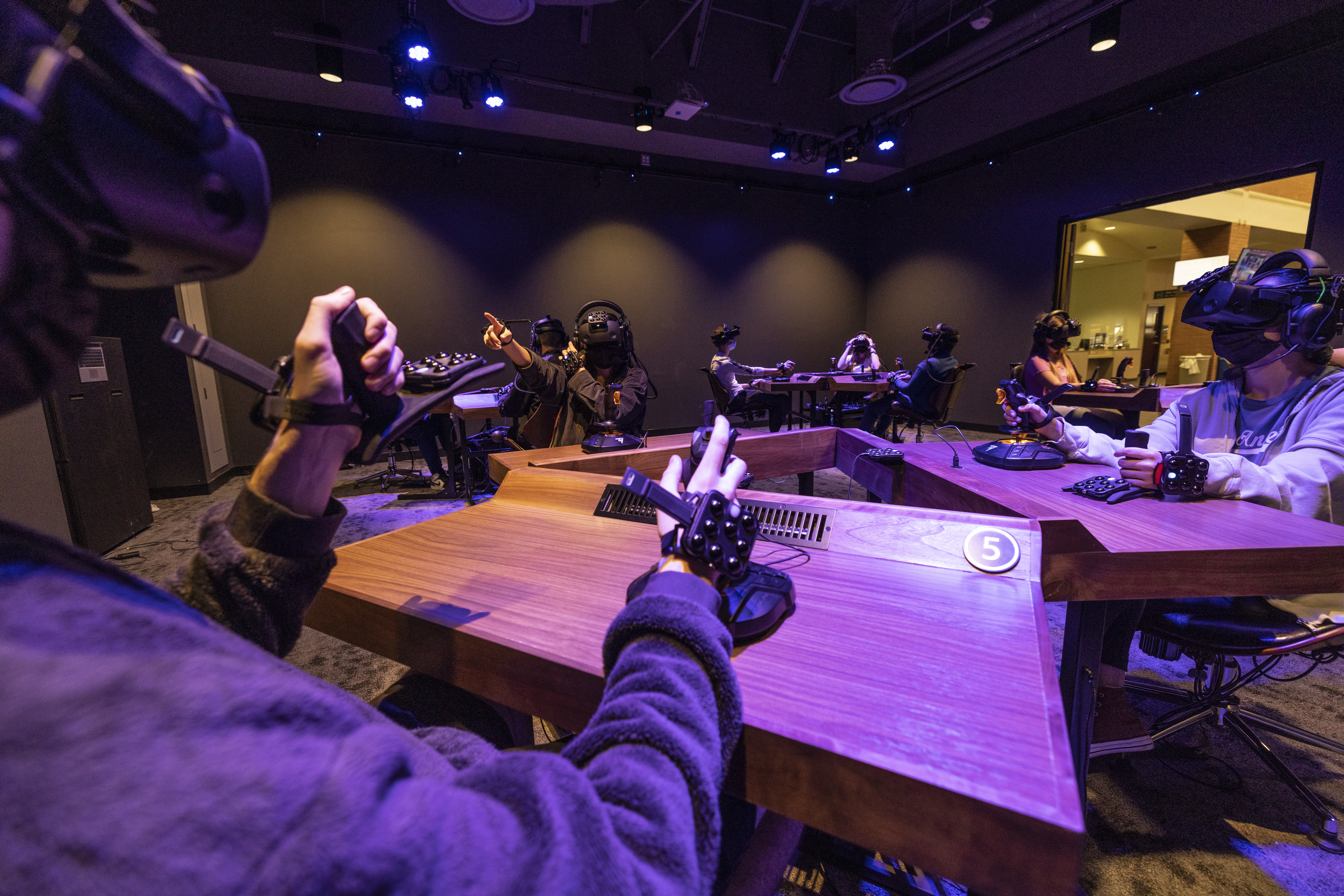
Virtual Reality (VR) goggles are in your future here at Rowan.
Rowan University sent out a press release that announced the “collaborating with Dreamscape Learn and Arizona State University (ASU) to launch a new approach to learning using VR-enabled experiences that combine education through exploration” pedagogy and cinematic storytelling techniques.” The dreamscape concept was conceived by film producer Walter Parkes, formerly the founding head of the motion picture division at DreamWorks Studios.
By the next academic year, students will be taking classes that could have VR scenario-based exercises and benefit from learning in an immersive experience.
Rowan leads the first group of universities in the nation to license the new technology and curriculum developed by Dreamscape Learn, in collaboration with ASU, which is recognized as the No. 1 innovator in higher education by the U.S. News & World Report.
Before next September, the Campbell Library will have built two VR pods on the fourth floor that can host 24 students as they enter whatever virtual mission their professor sends them through. In Jan. 2024, there will be a pod in the Tech Park as well which houses Rowan’s already existing VR Center. Faculty will be able to start using that right away to start creating the new classroom environment to incorporate into their lesson plans.
After ASU’s success with their biology labs, Rowan, through the partnership, can take what has been proven to be successful at ASU and apply it to biology labs here in Glassboro, taking steps towards reimagining higher education.
While in the pod with goggles on, students can create their own characters and see their other classmates as they navigate through a virtual experiment. Instead of reading from a textbook, or working through a scenario on pen and paper, students can find themselves actively completing simulated educational missions.
“Biology is just the tip of the iceberg of what we can do with this. The biggest course they [ASU] teach right now is a biology class. So we’re going to be adopting that… and we’re going to have a couple of pilot sessions of biology where we’re going to integrate their virtual worlds into our biology curriculum,” said Rowan Provost, Anthony Lowman.
For example, students can find themselves in a prehistoric dinosaur field taking measurements, scanning the dinosaurs’ noses to get a body temperature, and working with other classmates to diagnose the problem. They’ll be put up to the test to determine if there’s something in their environment making them sick, like food or bad air quality. While in a virtual reality, students will have every tool imaginable at their virtual disposal to complete the pretend, yet productive experience.
“One of the reasons Arizona State and Dreamscape picked us is because we’ve already developed virtual reality-based classes. So through a partnership with engineering, chess in biomedical arts, we’ve already developed virtual reality-based courses in our cave in the South Jersey Tech Park. Those courses are hard to scale,” said Lowman. “What DreamWorks does is it comes in with an advanced platform that we can scale from day one. So we already have faculty that have interest in, in teaching in the VR world and they don’t have to develop full class, but they can come into these new classrooms we’re putting in and use virtual reality environments to teach.”
The professor can take them wherever they want. Think of it as a virtual field trip. Although the implementation will start with biology, there’s no limit to which majors or classes could potentially use this tool in their classrooms. According to Lowman, these virtual reality scenarios could find themselves in classes for sustainability, disaster planning, courses in engineering manufacturing, digital humanities, or even history courses. Sports CAM classes could see a world where they’re able to drop students into a virtual NBA finals game and sideline report in scenario-like atmospheres.
“It’s going to be up to the faculty and their imagination,” said Lowman. According to Lowman, he doesn’t think there will be any struggle to get professors to participate in a futuristic, immersive learning expansion like this one.
For comments/questions about this story DM us on Instagram @thewhitatrowan or email thewhit.newseditor@gmail.com.





